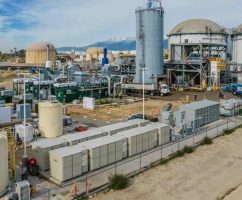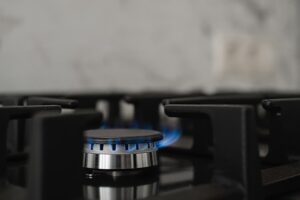Just months after being ordered to lift their game on distributed, grid-connected solar, Hawaii’s investor-owned electric companies have revealed plans to triple the amount of rooftop solar installed on the island state by 2030.
Hawaiian Electric, Maui Electric and Hawaii Electric Light, collectively known as HECO, announced on Wednesday plans to upgrade the grid and boost solar as part of a broader goal to achieve a minimum of 65 per cent renewable energy generation and to cut electricity bill costs by 20 per cent – also by 2030.
In late April, HECO came under direct pressure from Hawaii’s energy regulator, which ruled the utilities were not moving fast enough to address key sources of customer frustration, namely challenges connecting solar PV systems to the grid.

At the end of 2012, Hawaii was importing more than 90 per cent of its energy, making its electricity prices among the highest in the US. And while the state’s utility-scale solar generation increased nearly six-fold in 2013, the number of solar permits issued over the last year had plummeted by 44 per cent.
Backed by the state’s governor, Neil Abercrombie, the PUC put forward a plan to remedy this situation, giving HECO 120 days to either adopt this plan, or come up with a better idea.
“It is now incumbent upon the Hawaiian Electric Companies to use this road map diligently and promptly to move forward,” said commissioner Lorraine Akiba of the Public Utilities Commission.
“Today we are going to turn the corner on the energy transformation,” added Governor Abercrombie at the time. “There’s no turning back. This is the most significant day for Hawaii and its energy future that we have ever had. The time for talk has ended; the time for action is upon us. The energy Rubicon has been crossed.”
As part of the PUC order, the plan outlined “a growing role for non-utility energy service providers that can intermediate the relationship between the utility and the customer” by aggregating distributed resources into virtual power plants.
This was reportedly directed at Maui Electric Company (MECO), one of the HECO companies, which had been curtailing 28 per cent of the output from three wind farms in deference to its own, more expensive, oil-fired generation, wasting almost 16GWh of power a year.
As the deadline for the PUC order, 26 August, came and went, interested parties gathered to see if the message had got through. It had. The new plans for the Oahu, Maui County, and Hawaii Island electricity systems have now been released, and are expected to form a foundation for the Oceania state to utilise more renewable energy and use less fossil fuels.
“Our energy environment is changing rapidly and we must change with it to meet our customers’ evolving needs,” said Shelee Kimura, Hawaiian Electric vice president of corporate planning and business development. “These plans are about delivering services that our customers value. That means lower costs, better protection of our environment, and more options to lower their energy costs, including rooftop solar.”
As PV-Tech reports, HECO plans to open up the planning process so solar customers and companies will know how much PV capacity can be built and added to the grid each year. Utilities and grid firms will publish an annual limit for solar installs to ensure the grid can cope with demand.
HECO also plans grid enhancement and optimised control settings, an open generation docket for fair pricing for all grid customers and energy storage initiatives for Oahu, Maui, Molokai, Lanai and Hawaii Island by 2017.
Smart grids are being tested in Oahu, Maui County and Hawaii Island, to be completed within then next four years.
New products and services including community solar and micro grids have been announced by HECO as well as transitions from oil to natural gas.
“This plan sets us on a path to a future with more affordable, clean, renewable energy,” said Dick Rosenblum, Hawaiian Electric president and CEO.
“It’s the start of a conversation that all of us – utilities, regulators and other policymakers, the solar industry, customers and other stakeholders – need to be a part of, as we work together to achieve the energy future we all want for Hawaii.”
Up front investments from utilities and solar companies will be required to meet the 2030 goals.
Hawaii uses 18% renewable energy already, higher than its 15% by 2015 state goal, with more renewable energy projects under way including a 12MW solar project, located in Anahola, on the northeast side of the island of Kaua’i, Hawaii being constructed by US-based PV installer REC Solar.










